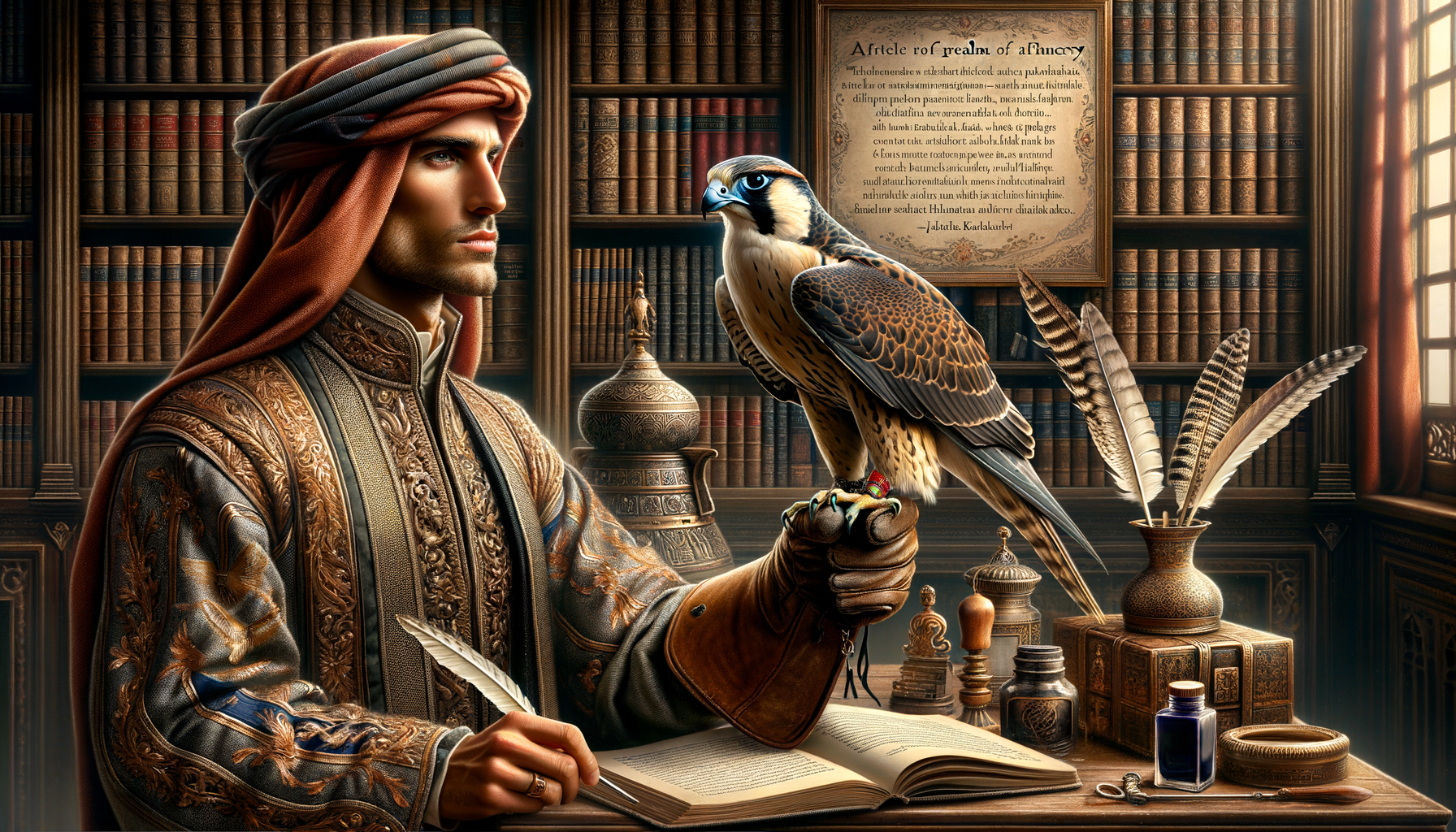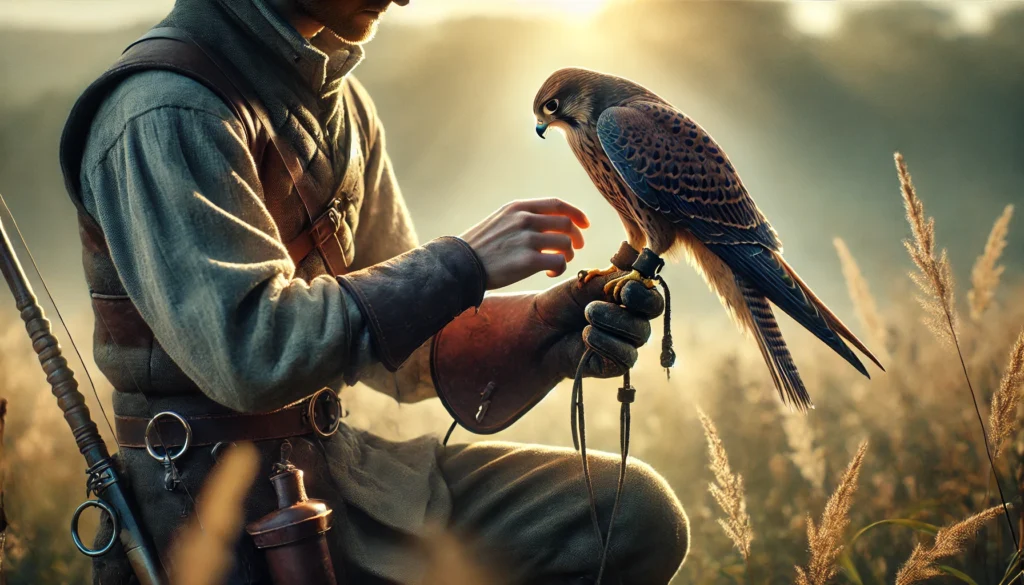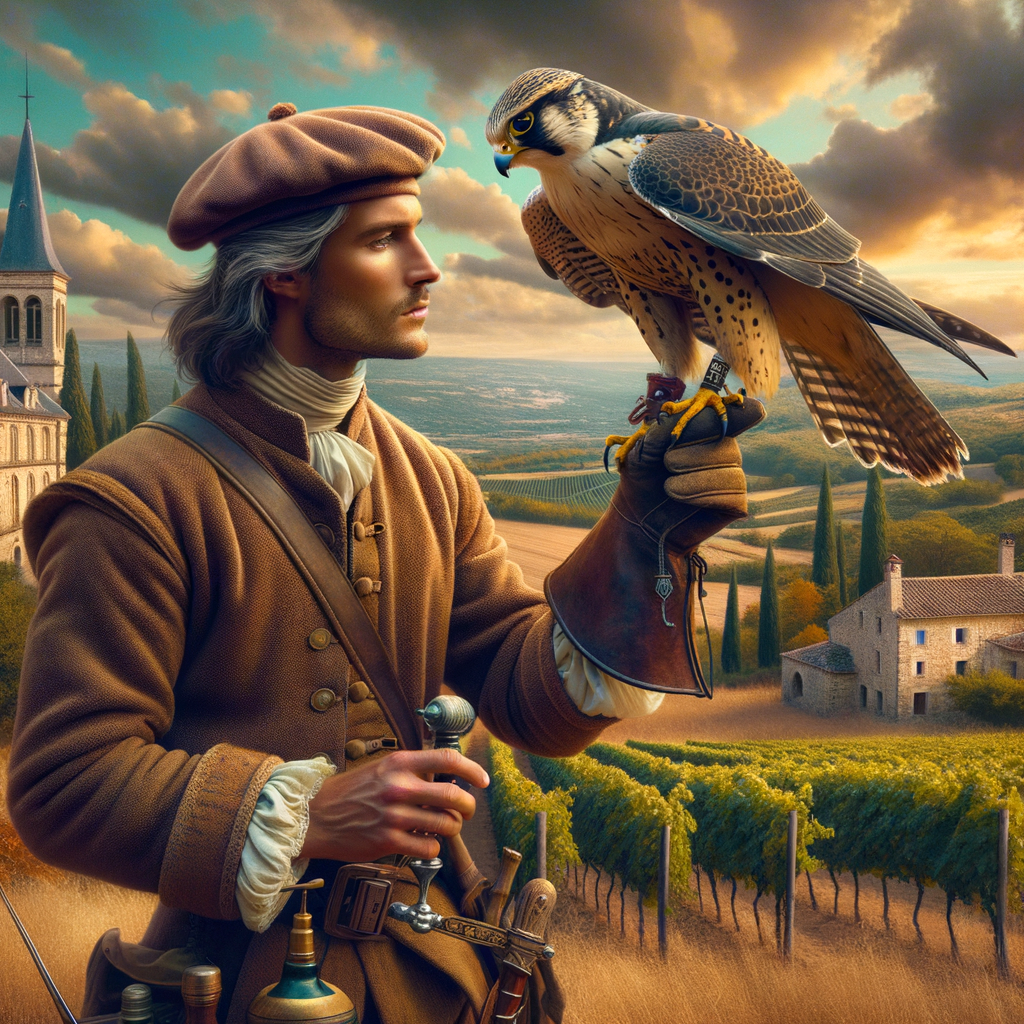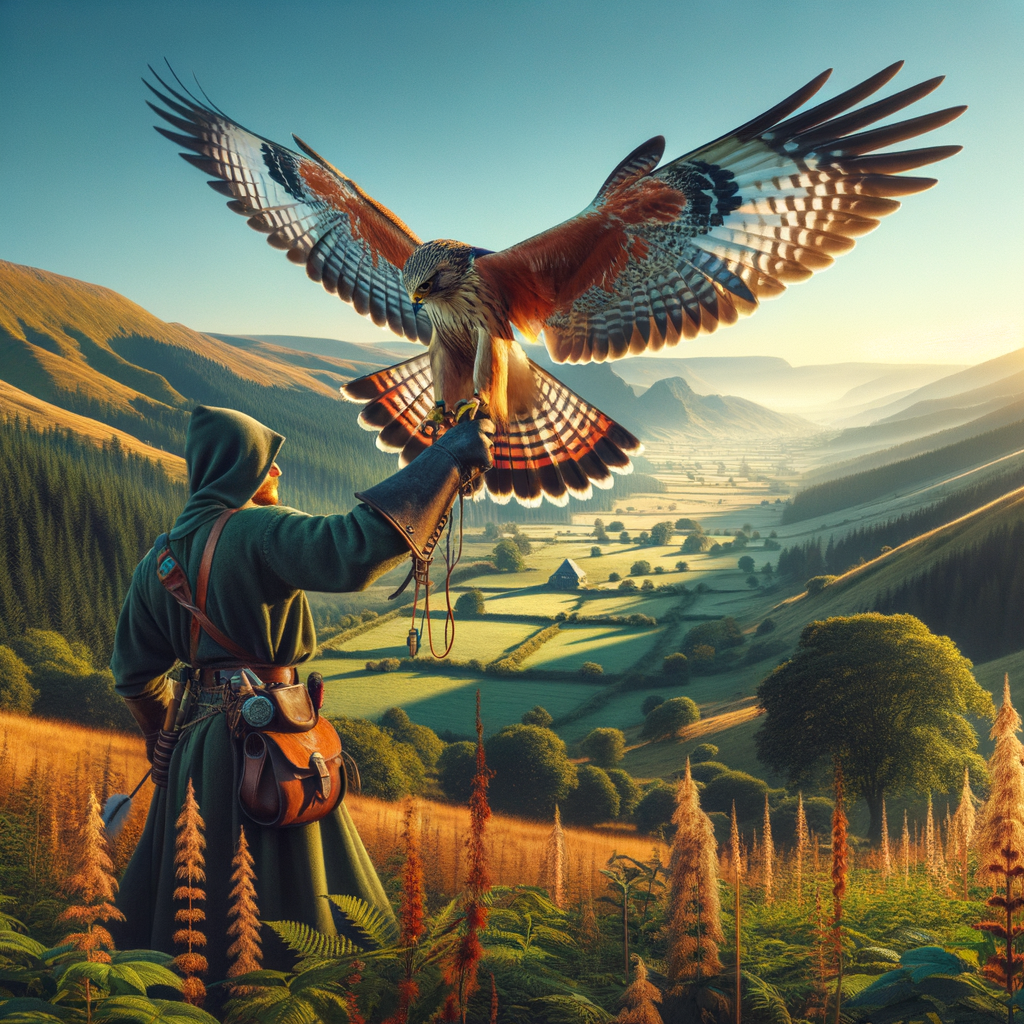Discovering the Art of Falconry in Literature
- Falconry is a fascinating sport with deep roots in history and literature.
- Writers have often depicted falconry as a noble and adventurous activity.
- This ancient practice involves training birds of prey to hunt in cooperation with humans.
- Literature celebrates the bond between falconer and bird, symbolizing trust and respect.
- Falconry stories immerse readers into a world of skill, patience, and majestic birds.
- The sport requires knowledge of bird behavior, training techniques, and care.
- Falconry has served as a metaphor for control and freedom in many classic tales.
- Exploring these stories enhances our understanding of cultural and historical contexts.
- These literary works inspire modern readers to appreciate the mastery and art of falconry.
Exploring the Art of Falconry Through Literature
Imagine taking a peaceful stroll along the rolling green hills of Ireland. As you walk, you come across ancient stories etched into the landscape, stories that weave together the rich tradition of falconry with the beauty of literature. Just like these Irish tales, falconry has its roots deeply embedded in history and culture, captivating minds and inspiring hearts for centuries.
At Learn Falconry, we believe that the art of training birds of prey isn’t just a skill; it’s a poetic dance between humans and nature. This intricate practice has been celebrated in literature across the ages, drawing parallels with the ancient storytellers whose words still echo in the modern world. Just like those timeless Irish legends, the tales of falconry are filled with lessons, triumphs, and moments of wonder.
In this article, we’re not just going to talk about falconry as a craft. We’re going to delve into its portrayal in literature, understanding how authors have narrated the elegance and mastery of falcons through their words. Whether you’re a nature enthusiast, a book lover, or someone intrigued by history, this exploration will reveal how interconnected our cultural stories are with the natural world.
So, join us as we journey through pages brimming with adventure, wisdom, and the timeless bond between falconers and their majestic birds. Keep reading, and let us take you into a world where the art of falconry and the magic of literature meet, creating a tapestry of tales as enchanting as the Emerald Isle itself.
The Intersection of Falconry in Art and Literature
Falconry is not just a practice; it’s a profound part of culture that has graced the pages of literature and filled canvases with its breathtaking depictions. The art of falconry, an ancient tradition of hunting with birds of prey, has left an indelible mark on both art and literature throughout history.
Falconry in Art
When you think of “falconry in art,” envision centuries-old paintings, intricate tapestries, and vivid sculptures depicting majestic falcons soaring through the skies or perched regally on a falconer’s glove. Artworks from medieval Europe, for instance, vividly portray nobility engaging in falconry, illustrating both the skill and the beauty of the practice. These paintings serve not only as artistic expressions but also as historical documents, offering insight into how falconry was regarded and practiced among different social classes.
If you want to dive deeper into the historical significance, you can explore the detailed history of falconry from ancient Egypt to medieval Europe here. Additionally, understanding the specific tools and equipment used in falconry art, like the various types of hoods and gloves, can also give you a richer appreciation. For more information on such equipment, check out the falconry equipment section here.
Falconry in Literature
“Falconry in literature” reveals itself as a fascinating theme as well. From ancient stories to contemporary novels, falconry has often been used as a symbol of power, freedom, and the bond between human and nature. Historical texts like the “The Art of Falconry” by Frederick II of Hohenstaufen, written in the 13th century, are seminal works that outline detailed methods and philosophies of falconry, reflecting its esteemed status. For a list of must-read falconry books, you can explore our collection of classic and modern falconry literature here.
The significance of falconry in stories transcends culture and time, with mentions found in Japanese haiku, Persian poetry, and even modern fantasy novels, where falcons often represent strength and loyalty. These literary references not only entertain but also educate readers about the intricate training and deep connections formed between falconers and their birds. To better understand the various training techniques and methods that make these stories come alive, visit our comprehensive guide on training a falcon here.
The Historical Perspective of Falconry
The “historical falconry” aspect is equally mesmerizing. From its roots in ancient civilizations to its evolution through the Middle Ages and Renaissance, falconry has been more than a hunt; it’s been an art form, a status symbol, and a lifelong passion for many. Kings and queens, like Emperor Frederic II or Queen Elizabeth I, were avid falconers, emphasizing the prestigious nature of the sport. You can learn more about the royalty and their falconry pastimes here.
Understanding how yesterday’s falconry techniques paved the way for today’s practices not only enriches one’s appreciation but also enhances one’s skills as a modern falconer. To see the timeline and evolution of these techniques, the historical falconry timeline is available here.
By exploring these themes’falconry in art, falconry in literature, and historical falconry’one can appreciate the majestic dance between human and bird, both in the field and through the annals of history and culture. As you continue your journey with falconry, remember that every flight and every story is part of a rich tapestry woven through centuries. Learn more about how falconry has influenced various cultures here.
Embark on your journey to discover the art, literature, and deep history behind this captivating tradition. For additional information and resources, please visit our comprehensive section on falconry techniques and history here.
Exploring the Fascinating World of Falconry Art and Literature in 2024
The Art of Falconry
In 2024, falconry is celebrated in various art forms, including prints, cards, and sculptures. These artworks often feature majestic birds of prey such as falcons and raptors, capturing their grace and power through the eyes of acclaimed wildlife artists. These masterpieces are not just for admirers of nature but can also enhance the aesthetic beauty of homes and offices.
One notable event combining art with a live experience is “The Art of Falconry.” This event offers a unique opportunity to appreciate the artistry behind capturing birds of prey in art while experiencing the thrill of seeing these magnificent creatures up close.
| Art Form | Description |
|---|---|
| Prints | Detailed illustrations and prints of falcons and other birds of prey by wildlife artists. |
| Cards | Decorative greeting and collectible cards featuring falconry themes. |
| Sculptures | Three-dimensional artworks that bring to life the dynamic presence of falcons. |
Falconry Literature in 2024
Falconry literature remains a significant part of this tradition, with several fascinating trends in 2024:
New Releases
This year has seen the publication of various new books focused on falconry, including detailed works on species like the Peregrine falcon. These new releases offer both seasoned falconers and those new to the art fresh insights and knowledge.
Comprehensive Collections
The Archives of Falconry houses one of the most extensive collections of English-language falconry books in the world. This comprehensive library serves as a repository of knowledge and history, ensuring that the literature and legacy of falconry are preserved for future generations.
Rare and Collectible
Rare and out-of-print falconry books are highly sought after by collectors. These valuable editions often provide unique historical perspectives on falconry practices and methods.
| Type of Literature | Use Case |
|---|---|
| New Books | Latest information and species-specific knowledge. |
| Comprehensive Collections | Preserved historical knowledge and practices. |
| Rare Editions | Unique collector’s items with historical insights. |
Educational Resources
Falconry literature is a key educational tool, often used to engage students with interactive experiences. These resources bring novels and historical accounts to life, making learning more engaging and memorable.
Calendars and Guides
Falconry enthusiasts also have access to detailed calendars and guides that provide visual and informative resources. These materials allow for planning and enhance understanding of falconry practices and bird behavior.
| Educational Tools | Purpose |
|---|---|
| Interactive Experiences | Engaging, hands-on learning opportunities. |
| Calendars | Visual aids for planning and education. |
| Guides | Informative resources for enthusiasts. |
Conservation Efforts for Falcons in 2024
While historical data on falconry in 2024 isn’t available, there are significant ongoing efforts to conserve falcon populations:
Falcon Reservoir
As of June 5, 2024, the Falcon Reservoir was 9.8% full, with a mean water level of 251.99 feet and a total storage of 249,262 acre-feet. These stats highlight the importance of water bodies in providing habitats for birds, including species of falcons.
Peregrine Falcon Banding
The Virginia Department of Wildlife Resources has been actively monitoring and banding Peregrine falcon chicks in 2024. This initiative helps track their populations and ensures their conservation.
| Conservation Effort | Impact |
|---|---|
| Falcon Reservoir | Maintains vital water habitats for birds. |
| Peregrine Falcon Banding | Tracks and monitors falcon populations. |
This exploration of art and literature shows how deeply intertwined falconry is with culture, education, and conservation. Each aspect of falconry, from its artistic representations to its literary significance and conservation efforts, showcases the enduring appeal and importance of this ancient practice.
The Enduring Legacy of Falconry: Art, Literature, and Conservation
Falconry continues to captivate and inspire people around the world in 2024. This ancient practice not only finds its place in modern art forms like prints, cards, and sculptures but also in literature that spans new releases and comprehensive collections. These artistic expressions and valuable books underscore the meaningful relationship between humans and birds of prey.
Art enthusiasts can enjoy falconry-themed events such as “The Art of Falconry,” offering unique experiences that blend visual arts with live interactions with these magnificent creatures. Meanwhile, literature aficionados find a treasure trove of falconry books, rare editions, and educational resources that bring the wild flights of falcons into the hearts and minds of readers.
Falcon conservation efforts like the monitoring and banding of peregrine falcon chicks are crucial steps toward preserving these species for future generations. The continued cultural significance of falconry’through art, literature, and conservation’proves that this age-old tradition remains an integral part of our shared human heritage. Let’s keep celebrating and supporting falconry in all its forms for years to come.



